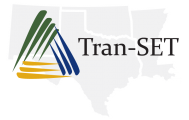Document Type
Report
Publication Date
10-2020
Abstract
Every year in the United States, wildlife-vehicle collisions (WVCs) cause 200 human fatalities, 26,000 human injuries, and substantial harm to wildlife populations, resulting in approximately $8.4 billion in total costs. The research team examined two US 64 bridges located near Lumberton, New Mexico that were designed to allow wildlife to cross underneath. Monitoring stations were positioned at each of the crossings so that both wildlife approaches and passages were observed. Special mounting brackets were designed and fabricated to allow for the installation of monitoring equipment. Wildlife observations were supplemented with WVC counts. Over seven months of study, nearly 100,000 wildlife photos were captured consisting of 1,438 individual animals using the crossing structures. Both crossings saw passage rates of approximately 80%. Findings suggest that elk and deer used both the smaller and larger crossings. Elk predominated during December through March while deer predominated during May through June, with most crossings occurring during defined nighttime peaks. There have been no elk and fewer deer collisions since the wildlife crossing system was installed. WVCs that have occurred were near the ends of the wildlife fencing, suggesting that fencing extent may be a factor that warrants further research. Lessons learned through this project help develop our understanding of WVCs, contributing to our goal of saving lives – both human and wildlife – and enhancing wildlife conservation efforts.
Recommended Citation
Ferenchak, N. N. (2020). Enhancing Evaluation of Wildlife Detection Systems. Retrieved from https://repository.lsu.edu/transet_pubs/75


Comments
Tran-SET Project: 19SAUNM03